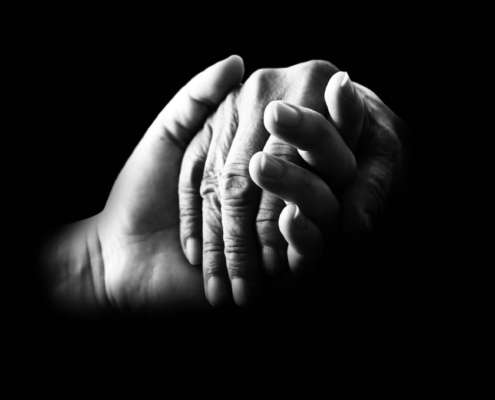Are you ready for the new year? Are you ready to envision your best year yet? Let’s adventure together into the world of deeply seeing what your soul has in store for you! On this edition of Soul Notes, we explore the concept and practical ways of visioning your desires into reality.
Why Vision(ing)?
 Visioning helps you access information you may never be able to elicit through a quick ego-centered, mind-centered “checklist.” Visioning involves seeing by connecting to the unseen world. It is a beautiful, spiritual, nonphysical way of seeing – allowing you to gain insights, wisdom and guidance in a way that nourishes your soul. Visioning facilitates decision-making as to which direction to take next in your life, or with regard to a particular challenge, question, or inquiry. It helps propel you forward from a place that feels grounded, inspirational, and authentically YOU! Visioning ensures that your next steps come from a place of alignment, not misalignment. (For a refresher on alignment, and why it’s important in your day-to-day life, go here.)
Visioning helps you access information you may never be able to elicit through a quick ego-centered, mind-centered “checklist.” Visioning involves seeing by connecting to the unseen world. It is a beautiful, spiritual, nonphysical way of seeing – allowing you to gain insights, wisdom and guidance in a way that nourishes your soul. Visioning facilitates decision-making as to which direction to take next in your life, or with regard to a particular challenge, question, or inquiry. It helps propel you forward from a place that feels grounded, inspirational, and authentically YOU! Visioning ensures that your next steps come from a place of alignment, not misalignment. (For a refresher on alignment, and why it’s important in your day-to-day life, go here.)
What Happens if You Don’t?
When you don’t take the time to dedicate yourself to envision what’s best and next for you in your life, you run the risk of:
- Suffering from the tendency to react compulsively or unconsciously.
- Agonizing about making your next move (or making no move at all), from a place of fear or anxiety.
- Engaging in seductively destructive behaviors.
- Hiding under the illusory cloak of safety while life passes you by, and your dreams stay truly dormant and put “on hold.”
- Proceeding through your next venture, juncture, year, or life chapter without even noticing if it’s right for you.
- Failing to identify even what, if any, of the available choices, are even what you TRULY want, seek, or desire!
You can dive in and write a list of resolutions or mark out an instant action plan all you want. You can draw up blueprints for your year, and your life – but be careful what you’re drawing up.
During a drafting class when I was in junior high school, as part of a class assignment, I put together a blueprint for a house. Without taking a step back to envision what the house would really be like, I jumped in with my T-square and starting drawing. By doing so, I ended up putting a fireplace in one location on one floor, and another fireplace on an entirely different location on the second floor. Well, unless I was going to build two chimneys for this house, that could pose a problem! How was the smoke going to make it from one fireplace to the other and out the rooftop, if the flue(s) didn’t connect? If I had allowed myself the time and space to envision what actually LIVING in that house would be like, then likely I would have discovered the chimney dilemma. (My dad, by the way, was an architect and a builder, and right away noticed the flaw in my plans, when I showed them to him back then. He found it to be rather amusing!)
I remember around that same time period my dad was sent by his company to Japan to help build pre-fabricated housing. Before my father arrived on site, unbeknownst to him, the concrete foundation had been set using the metric measuring system. Here’s the catch: the pre-fabricated walls that were being shipped over to Japan from the United States had been cut in lengths that were measured using the British imperial units (inches/feet) system. As you can imagine, that pretty much defeats the purpose of pre-fabricated housing, if the pre-fabricated pieces don’t fit!
So, where do the pieces fit in your life? Where do the pieces not fit in your life? Do your chimneys, the hearth of your home, line up? The very foundation and starting place proves critical! So much of your soul shining success (or lack thereof) stems from envisioning, creating and drawing from the appropriate foundation.
In other words, resist the impulse to “jump in” and create from a place of “got to get it done.” That forceful energy threatens to bring with it a bulldozing effect that obliterates everything (including all the good stuff) in its path. That take-action energy has its useful purpose – but it’s best invoked further down the line, and in a more strategic, focused way.
Otherwise, the whole house (of cards) collapses. You feel overwhelmed. You feel pressured. You feel “forced.” You feel UNinspired. You risk facing unintended, adverse results.
It’s not about checking off a to-do list. It’s about allowing your dreams and desires to take front and center stage, and enjoying the journey as you experience them unfolding.
Is this year ahead, 2016, a time for you to move forward in envisioning and creating your best life? Are you going to allow yourself to spring forth into your fullest potential? Or, is it a time that by choice or by default (which really is a choice, by the way) – your new year ahead, like most New Year’s resolutions, sputters out and comes to a crawl or even a stagnating halt altogether?
Which is it? Claim it now, and if you’re open to learning more about how to get cracking, read on!
DARE TO DESIRE!
| “I’d LOVE to, but I could NEVER…!” |
First off, let go of any preconceived notions of what is or isn’t possible for you. Loosen up the reins! As you would when riding a horse, release your grip some, and allow for a good gallop!
A number of years ago, I had moved from an apartment in Los Angeles that was several miles inland, to a place within a few blocks of the Pacific Ocean. I moved to a building right up the hill from the beach front where they used to film the television show “Bay Watch.” [Okay, maybe that’s not the most spiritual reference I’ll ever make on this blog, but you get the idea! If this makes you feel better (it did me), it was also right next to a self-realization center. On September 11, 2001 (now known as 9-11), I went there to meditate — and I felt blessed to have the luxury of walking around their gorgeous, serene grounds, on such a tragic and deeply somber day.]
My commute to downtown Los Angeles back then meant driving along several miles of ocean front along Pacific Coast Highway. I could smell the salt in the air, and feel the sea breezes. From as young as I can remember, I had always enjoyed the beach and the ocean. And yet, when I first moved in, and sat out on my balcony overlooking our shared swimming pool, I thought to myself – “Why did it take me so long to move here, this close to the beach?” I grew up in Southern California, and yet I always seemed to think that I needed to live somewhere inland, and then drive to the ocean. Somehow, I had convinced myself that only really wealthy people lived by the beach. I also realized in that moment, that truth be told, I somehow had been accepting the sad “fact” that I didn’t deserve to live in a really cool apartment in a tony section of Los Angeles. I didn’t think it was possible for me. And there I was — not only was it possible, it was happening, as I sat there on my balcony. For months, it still felt a bit surreal living there, and I found myself “growing into” an expanded self-realization of my own, I suppose you could say.
I would some years later again move on, and purchase a home (also something that for a long time I didn’t believe was possible for me in my lifetime) in another part of town. That apartment by the sea, however, will always hold a special place in my heart and soul.
So, the lesson here is this: If I hadn’t let go of the notion that “I’d love to, but I could never…,” I would have stayed cooped up in a stifling apartment miles from where I yearned and dreamed to be.
Envision what you truly desire, and follow those clues. There’s often something truly heart telling in there. That’s where inspired actions stem from, originate from.
Visioning also involves listening
Visioning is not limited to one or any of the physical senses. It involves all the senses, along with every bit of your inner knowing.
Visioning involves deep soulful listening. Through meditation and other guided internal processes, you can tap into your essence and true desires. Your guides are there for you, whispering to you their soulful wisdom. Are you quiet enough to hear them?
Commit to yourself and to the true desires in this coming year that you will uncover through this higher vision for your life, and enjoy the journey!
Where to start?
You may not know exactly, right in this very moment, if what you truly desire to create will actually end up coming into fruition — because you haven’t created it yet! You have had other experiences, however, where you do know how wonderful they made you feel. Accordingly, I would encourage you to use what I would call the “Yes, more of that, please!” test. What is your heart drawing you toward? What are you excited about welcoming into your life?
Listen to your own (intuitive) guides, and allow yourself to get quiet to hear what they have to say. They are always available to you. They are your very own!
Reinforcement
You can choose to bring forth what you desire, and consistently tap into and recreate those good emotions. Conversely, you can focus on and reinforce what it is that you don’t enjoy feeling. The “Yes, more of that please!” barometer is always available to you, at the ready. Simply remember to invoke it. Consistently. And often.
Dare to dream.
Dare to desire.
Dare to vision.
Dare to make it all come true.
For your consideration:
What would listening to your yearnings and desires, and envisioning them into reality, mean to you? How has or would your life be changed upon doing this type of practice? If you haven’t done this type of visioning so far, how about giving it a try? What if anything is stopping you?
Okay, your turn:
When is the last time you set aside the time and space to determine what you truly desire? What is something you would like to see yourself bringing forward into your life this year? I invite you to share your thoughts, feelings, and experiences in the Comments section, below. Soul-to-soul!
© 2016 Lori A. Noonan. All Rights Reserved.



 Let’s take, for example, an automobile traveling down the road. When in alignment, barring any intervening forces, it moves forward (or backward!) in a perfectly straight line. The vehicle moves efficiently, with minimized wear and tear on the car’s suspension, brakes and tires. Alignment makes for an even distribution of force. A driver may compensate for poor alignment through (over-)steering the car, but that exerts more wear and tear on the driver and the vehicle. (I know, I know, we’re talking physics here on the blog! It’s okay to include science in the discussion, once in a while, right?)
Let’s take, for example, an automobile traveling down the road. When in alignment, barring any intervening forces, it moves forward (or backward!) in a perfectly straight line. The vehicle moves efficiently, with minimized wear and tear on the car’s suspension, brakes and tires. Alignment makes for an even distribution of force. A driver may compensate for poor alignment through (over-)steering the car, but that exerts more wear and tear on the driver and the vehicle. (I know, I know, we’re talking physics here on the blog! It’s okay to include science in the discussion, once in a while, right?)

 As we introduced in a previous post: Yogi Bhajan, a master of kundalini yoga and spiritual teacher for decades to thousands worldwide, taught a set of principles that he coined the Five Sutras of the Aquarian Age.
As we introduced in a previous post: Yogi Bhajan, a master of kundalini yoga and spiritual teacher for decades to thousands worldwide, taught a set of principles that he coined the Five Sutras of the Aquarian Age. Ready for another of Yogi Bhajan’s 5 Sutras?
Ready for another of Yogi Bhajan’s 5 Sutras?


